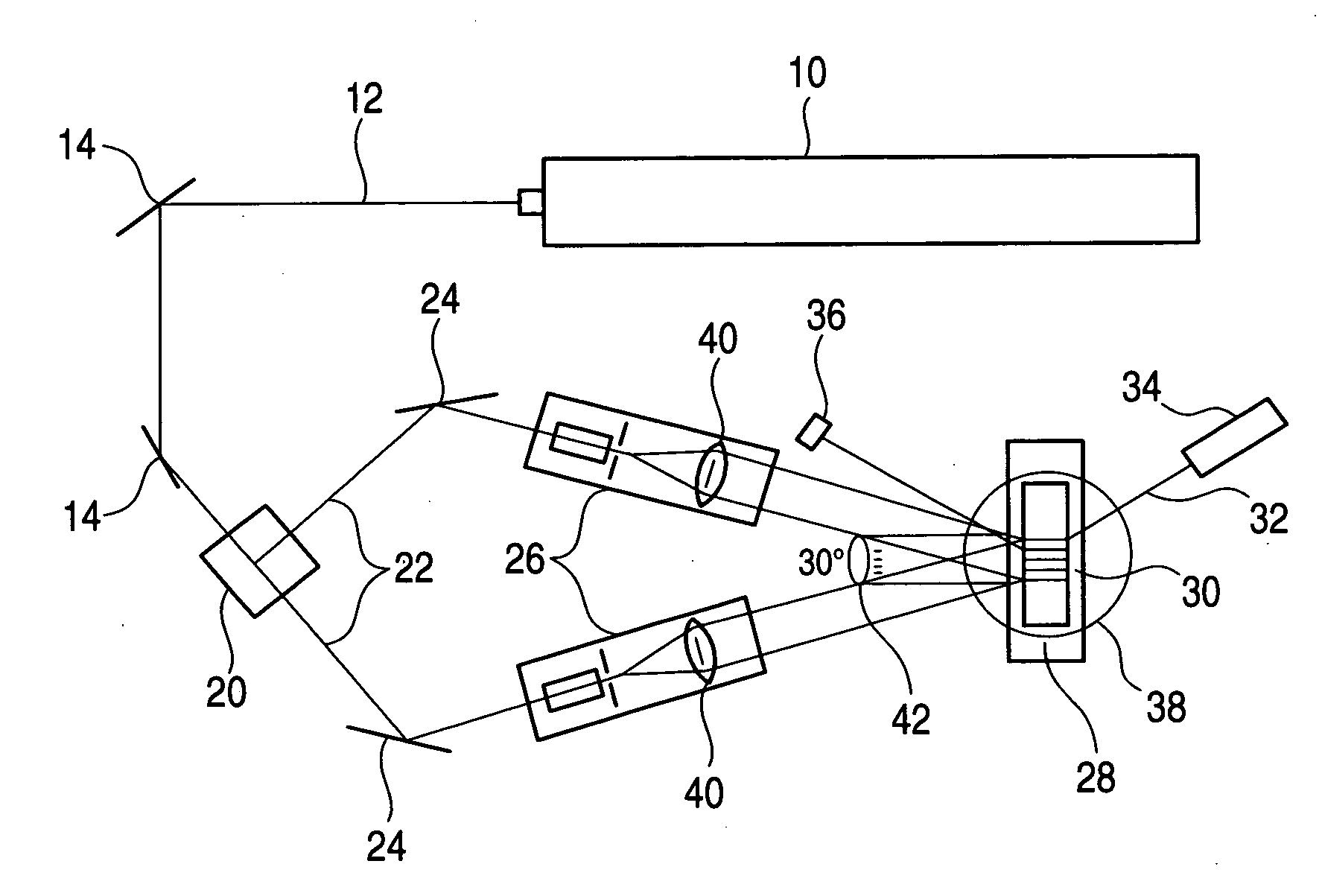Hologram recording material and optical recording medium
a technology which is applied in the field of optical recording medium and recording material of hologram, can solve the problems of hard discs, unreplaceable, and difficult to replace, and achieves high diffraction efficiency, good storage properties, and high sensitivity.
- Summary
- Abstract
- Description
- Claims
- Application Information
AI Technical Summary
Benefits of technology
Problems solved by technology
Method used
Image
Examples
example 1
(Hologram Recording Method Involving Color Development Process)
[0346] Using Posiratio (produced by Liquid Control Inc.), 200 g of Baytech WE-180 (50 / 50 blend of biscyclohexylmethane diisocyanate and NCO-terminated prepolymer based on biscyclohexylmethane diisocyanate and polytetramethylene glycol available from Bayer Inc.), 200 g of Mondur ML (liquid diphenylmethane diisocyanate available from Bayer Inc.), an optical refractive index-modulating component (as set forth in the table below) and 254 mg of butylated hydroxytoluene (BHT) were thoroughly mixed in the tank A thereof to form a uniform solution which was then deaerated. In the tank B of the device were thoroughly mixed 807 g of a polypropylene oxide triol having a molecular weight of 1,000, 310 μl of t-butyl peroxide and 10.1 g of dibutyl laurate tin to form a uniform solution which was then deaerated. Subsequently, the content of the tanks A and B were mixed to prepare compositions 101 to 110.
[0347] These compositions for...
example 2
(Hologram Recording by Latent Image Color Development-Coloring Material Self-Sensitized Amplification Color Development Reaction)
[0367] Hologram recording materials 201 to 204 were prepared in the same manner as in Example 1 except that the components set forth in Table 3 were used. The unit % indicates % by weight.
TABLE 3SensitizingdyeElectron-Dye precursor group +Sam-donatingpolymerizationPolymerizableBin-plecompoundinitiatorcompoundder201S-93 0.8%L-2(5%) + I-5(20%)M-1 32.2%32%A-1 10%202S-92 0.4%L-2(5%) + I-5(20%)POEA: NA32%A-1 10%= 4:1 32.6%in total203S-6 0.2%DD-33(5%) + PB-2(20%)M-2 32.8%32%A-1 10%204S-93 0.8%E-4(20%) + I-2(1.6%) +POEA: NVC33%A-1 10%MBO(24%)= 2:1 32.2%in total
[0368] The hologram recording materials were each then exposed to YAG laser second harmonic (532 nm; output: 2 W) as a light source in a two-flux optical system for transmission hologram recording shown in FIG. 1 to perform recording. The angle of the object light with respect to the reference light was...
example 3
(Discoloration Process (Sensitizing Dye+Discolorable Dye) Hologram Recording Method)
[0383] Hologram recording materials 301 to 307 were prepared in the same manner as in Example 1 except that the components set forth in Table 5 were used. The unit % indicates % by weight.
TABLE 5Electron-donatingDiscoloringDiscolorableSampleSensitizing dyecompoundagent precursordye301S-6 0.5%A-142%I-550%G-1616%302S-931.6%A-142%I-550%G-2816%303S-920.84% A-142%I-550%G-158%304S-75 8%—I-550%G-168%305S-75 8%—I-550%G-138%306S-75 4%A-136%I-550%G-1616%307S-931.3%A-142%PB-220%G-358%
(X51 represents PF6)
[0384] The hologram recording materials were each then exposed to YAG laser second harmonic (532 nm; output: 2 W) as a light source in a two-flux optical system for transmission hologram recording shown in FIG. 1 to perform recording. The angle of the object light with respect to the reference light was 30 degrees. The light had a diameter of 0.6 cm and an intensity of 8 mW / cm2. During exposure, the holo...
PUM
 Login to View More
Login to View More Abstract
Description
Claims
Application Information
 Login to View More
Login to View More - R&D
- Intellectual Property
- Life Sciences
- Materials
- Tech Scout
- Unparalleled Data Quality
- Higher Quality Content
- 60% Fewer Hallucinations
Browse by: Latest US Patents, China's latest patents, Technical Efficacy Thesaurus, Application Domain, Technology Topic, Popular Technical Reports.
© 2025 PatSnap. All rights reserved.Legal|Privacy policy|Modern Slavery Act Transparency Statement|Sitemap|About US| Contact US: help@patsnap.com



